For hundreds of years, crystal stemware has symbolized elegance, class, and money. Crystal stemware, which was historically a popular wedding gift, was often linked with wealth and dignity, as the lower classes could not afford such luxury.
Fostoria, Lenox, Federal Glass Company, and Waterford were among the companies that made antique crystal stemware.
While some of these companies continue to produce crystal stemware, there are a few techniques to accurately recognize ancient crystal stemware.
Learning how to identify the crystal producer is a key step in recognizing and valuing your antique crystal stemware.
For almost 400 years, owners have valued and adorned tables with antique crystals, and its tale continues to sparkle now.
Table of Contents
Identification of Crystal Manufacturers
Crystal stemware producers active between the 17th and 19th centuries are difficult to identify. By the 1820s, firms had begun to mass manufacture crystal stemware with creator logos.
There are several methods for identifying crystal stemware, albeit their accuracy varies. To begin, identify the pattern and the creator.
Resources And Appraisers For Antiques
Bring digital or printed photographs with you if you take your stemware to an antiques dealer or appraisal agency; some appraisers will look at emailed photos or faxes to begin the process.
An appraiser or website might provide instances of signature variations and the unique characteristics of antique crystal production enterprises.
Alternatively, you might go to your local library and look for books and reference manuals with photographs of antique crystal stems.
Markings And Emblems Of The Manufacturer
Check for a marking on the bottom of the stem to identify the maker of antique stemware. The firm that created the crystal usually has an engraving, insignia, or label on it.
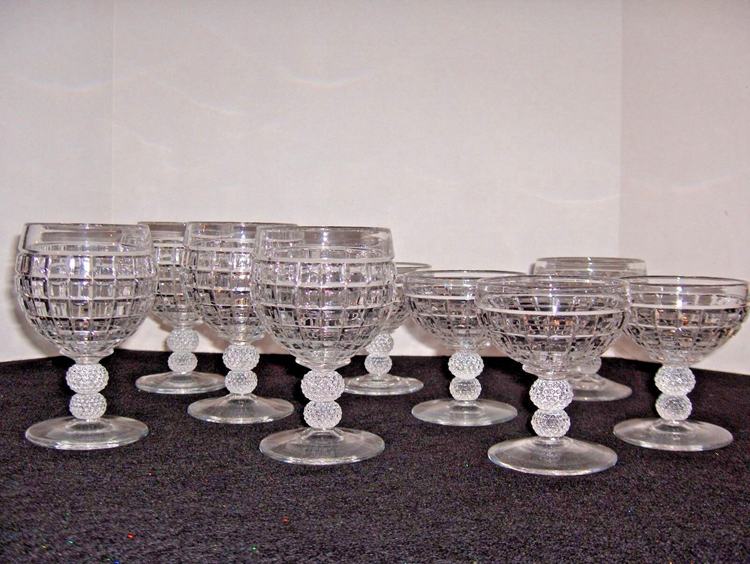
Look for a manufacturer’s mark or insignia by holding the stem up to a light. Heisey stemware is marked with the Heisey diamond H and the letter H inside a diamond; some have an embossed H and a diamond.
Bring a magnifying lens or loupe with you when you go to antique markets to look for the insignia, which may fade with time.
Keep an eye out for other classic crystal stemware manufacturers, such as Lenox and Fostoria.
The Sound And Look of Crystal
Crystal is not only gorgeous, but it also sounds nice. When you tap or clink a crystal glass, it creates a “ping” sound, but an average glass makes a dull sound.
Wetting your finger and dragging it around the rim of the crystal provides a tonal effect akin to a musical note, which is another valuable test. Furthermore, light passing through genuine crystal gives a prism effect or soft rainbow.
When analyzing crystal glasses, pay attention to the stems and cut, since this will assist your appraiser in identifying your stemware and its creator.
Edinburgh crystal features circular cuts divided by crisscrossed cut lines, whilst Waterford is defined by faceted prism-shaped stems with ornate cuts along the bottoms of select glasses.
Crystal Stemware Manufacturer Marks
Most crystal stemware contains some kind of marking, which you may not detect at first. A magnifying lens and bringing the stemware up to the light can help you detect and read the mark.
- The mark might be on the rim or center of the foot, the stem, or the bottom of the bowl.
- The mark might be an initial, a logo, a phrase, or coded numbers and characters.
- Some markings are embossed or molded, while others are engraved or stamped on the glass.
- To assist you to read the mark, rub a pencil over a sheet of thin paper put on top of it.
- You may check the Great Glass website for U.S. and European stemware insignia to help you identify yours.
- Inkspot Antiques has compiled a list of internet sites that will help you identify the markings of various manufacturers.
Stemware Pattern Helps Identify Manufacturer
Manufacturers frequently employed distinctive patterns or used pattern names and numbers to identify their products. If you can identify the design on your stemware, you will be able to find out who made it.
- The stemware might be inscribed with pattern names or numbers.
- Make a note of specifics in the design pattern, such as a faceted stem, if you can’t discover a pattern name or number.
- To assist narrow down the maker, browse internet databases and collections for characteristics or patterns comparable to yours.
- Replacements are the granddaddy of china and glassware stores, with hundreds of vintage and antique crystal stemware for sale. You may also use their free identification service.
Most Popular Crystal Stemware Manufacturers
Knowing what names to look for can assist you in selecting high-quality and collectible items. Among the best-known crystal businesses of the 1700s and 1800s were:
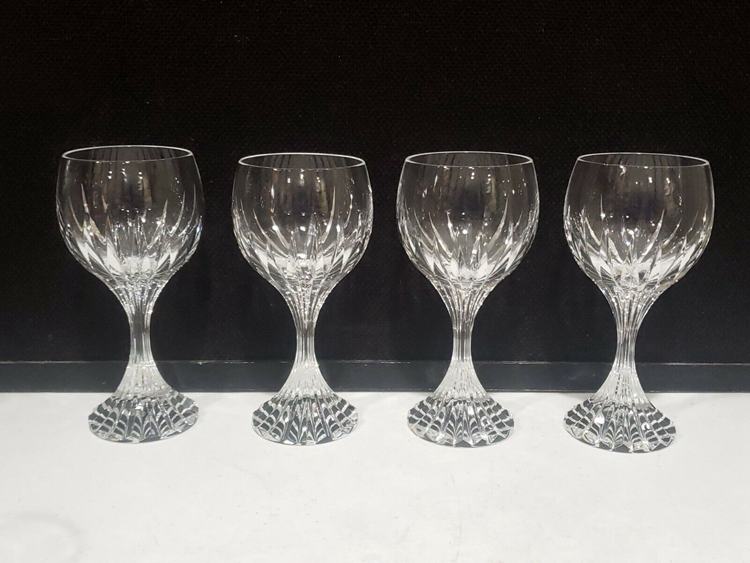
- Baccarat has been producing fine crystals since 1822. Its markings include etchings, molded marks, and labels, so carefully study your glass before buying or selling it.
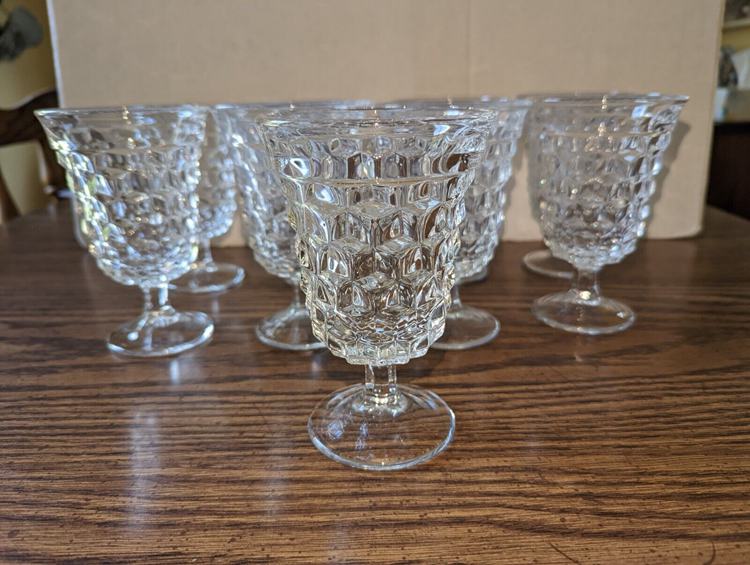
- Fostoria, which was in operation from 1887 to 1986, was a leading crystal and glass company noted for depression glass and crystal. Many of their markings can be found in the Glass Lovers Glass Database.
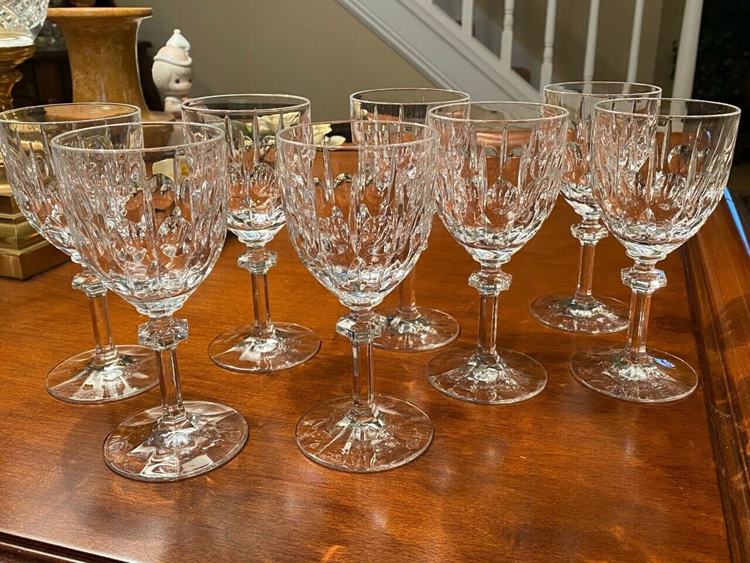
- Gorham was founded in Rhode Island in 1831, and while it is best known for its silverware, it also makes china and stemware and is highly sought after by collectors. Labels or stamps can be used to identify pieces.
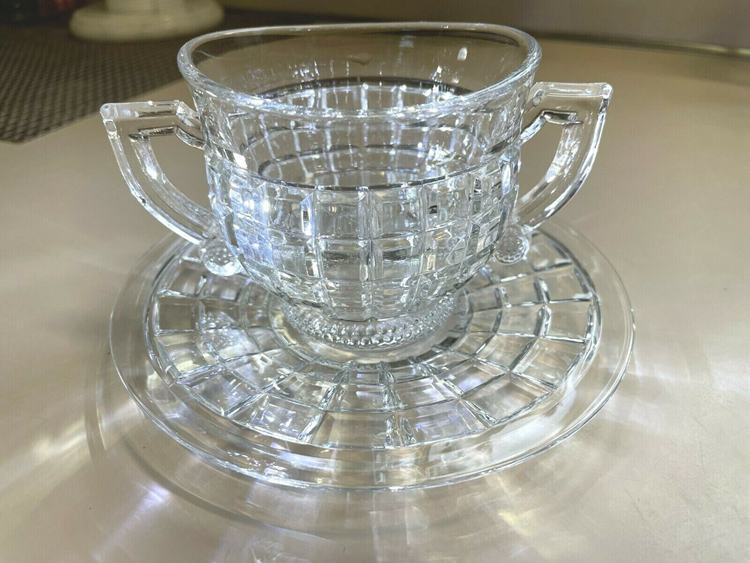
- Heisey was only in business for a short time but was a significant crystal maker. They employed a diamond H mark, which is unusual to find on stemware.
The Basics of Antique Crystal Stemware
The chemical makeup of antique glass differs from that of crystal. Fine crystal is glass that has had lead added to it for glitter and robustness.
Although lead crystal is heavy, it also makes the glass strong enough to be spun or sculpted into small shapes while staying resistant.
Identifying Crystal Versus Glass Stemware
If the maker and pattern are unknown, attempt the following tests to discover if you have crystal rather than glass:
- The glass should be tapped. Crystal makes a delightful pinging sound, whereas glass thunks.
- Raise the glass to the light. Crystal can refract light and produce a rainbow prism effect, but glass cannot.
- Even though crystal seems heavier than glass, the rims on stemware may be thinner.
- Bohemian crystal has been mass-produced, and a contemporary guide indicates that glass cutters may leave an untreated cut in the item to ensure authenticity.
- Wine and water do not always mix, and goblets are not sherbet glasses. By recognizing the form, you may be able to establish the purpose of the glass, which will aid in identification.
Characteristics of Crystal Stemware
Glasses are distinguished by the shape of the bowl, the stem, and the base or foot. Here are some examples of crystal stemware shapes:
- Baluster: This has a thicker stem towards the foot.
- A bucket bowl is a container with a broad opening.
- Air twist stems: These were created to make the item lighter and hence less burdened.
- Facet cuts are the flat parts of the stems that are removed.
- Knopped stems: These stems have bulbs or protuberances.
Antique Crystal Stemware Examples And Values
Many glass firms in Europe and United States produced antique specimens of crystal stemware (100 years or more). The older, elaborately embellished versions can range in price from $1,000 to $4,000 or more per glass.
- Waterford crystal stemware is perhaps the most well-known, with its glittering crystal and rhythmic patterns.
- The “bright” crystal glass and complex cuts and embellishments were hallmarks of the American dazzling era (the 1880s to World War I).
- Glass created after World War I is considered vintage, and numerous businesses, notably Cambridge, produced antique crystal stemware during the twentieth century.
- 1stdibs sells reasonably priced high-end items such as stemware. Complete sets, such as a Val St Lambert Pampre wine crystal stemware set that was initially advertised for $5,945, are available here.
- Antiques Atlas is the online antiques and collectibles mall in the United Kingdom, where this pair of rummers was listed.
Antique Crystal Maintenance
Antique crystal is lovely, but it requires careful care. Preserve it for the future by taking adequate care of it.
- Crystal is more porous than glass. Allow it to stand overnight with wine in the bottom of the glass, but soon rinse it.
- Never use the dishwasher and always hand-wash.
- When washing, keep a folded tea towel in the bottom of the sink. This will guard against nicks, chips, and breaking of the delicate crystal.
- To make the crystal gleam, even more, rinse it in water with a little white vinegar added.
- Dry quickly with a soft cloth and store.
- Never set your crystal in a window or other location where temperature extremes occur: crystal is sturdy, but continual expansion and contraction from heat and cold will fracture the glass.
FAQs
How do You know which crystal glasses You have?
Take a glass and place it near a light source. If it produces a rainbow prism effect, it is made of crystal.
If it doesn’t, you’re just holding a simple glass. If you tap the glass and hear a melodious ring with a slight echo, it is crystal.
What is the best way to tell if a wine glass is vintage?
When it comes to recognizing vintage drinking glasses, marks are your best friend. It’s the first thing you should look at in every antique, plainly displaying who produced the glass.
To recognize the symbol, signature, or trademark, use a glassmaker markings book. Google is as capable.
What is the difference between glass and crystal?
Another method for sound testing glassware is to softly rub a damp finger over the rim in a circular motion.
If it’s crystal, you’ll notice a slight tone emanating from it. Examine the sharpness or smoothness of the cut with a keen eye. The smoother the surface, the more probable it’s crystal.
How Can You Recognise Lead Crystal Patterns?
5 Methods for Identifying Lead Crystal:
- Check the weight. Check the weight of the item in question.
- Tone evaluation. When hit with a metal implement, such as a knife or fork, the lead crystal produces a characteristic resonant ring.
- Look for a Visual Prism.
- Examine the texture of the item’s cutouts.
What Should You Do With Your Old Crystal Stemware?
10 Uses for Old Glasses:
- Cupcake Stand Instead of wine glasses, turn them upside down and use the bottom as a cupcake stand during gatherings.
- Holder for office supplies Do you want to add some color to your office?
- Miniature Lamp
- Succulent Planters
- Display of Photographs.
- Floral Display
- Catch-All Bowl
- Teacup Candle
Is Old Crystal Valuable?
Collectors perceive crystals manufactured during this era as antique, but those produced after World War I are often recognized as vintage glassware.
Older and more elaborately adorned crystal glassware can be worth $1,000 to $4,000, or even more, depending on its condition and design.
How Do You Know Whether A Piece Of Crystal Stemware Is Antique?
Check for a marking on the bottom of the stem to identify the maker of antique stemware. The firm that created the crystal usually has an engraving, insignia, or label on it.
Look for a manufacturer’s mark or insignia by holding the stem up to a light.
What Exactly Is The Difference Between Crystal And Lead Crystal?
Most individuals are unaware of the distinction between crystal and lead crystal glasses. The only distinction they are aware of is that one of them contains lead.
Lead crystal shines brighter than other crystals. This is due to the presence of lead oxide, which raises the refractive index.
Conclusion
The maker’s mark, which is normally engraved or embossed on the bottom of the stem, is commonly used to identify older crystal stemware.
Some markings are faint and visible only when the glass is brought up to the light. Old markings fade with time as well, and it may be necessary to use a loupe or magnifying lens to read one properly.
After identifying the marking on a piece of crystal stemware, the source of the stemware may be found by looking for the mark in listing books.
Various stemware pattern websites may also assist you in identifying stemware. However, not all antique high-end crystal stemware is inscribed. If business pattern data are not accessible, older crystal stemware cannot be recognized.
The cut and stems of crystal stemware can also be used to identify it. For example, Waterford crystal is well-known for its faceted stems and beautiful cuts on glass bases.
Antique appraisers can also assist in the identification of crystal stemware. Some people are willing to look at images to start the identifying process. Appraisers are likely to be familiar with the distinguishing characteristics of stemware brands, especially those made by antique crystal producers, and they have the means to investigate individual pieces of crystal.
HOPEFULLY! Our guide will help you identify Vintage crystal stemware patterns.





![Where To Sell Antique Furniture In 2022 [Ultimate Guide]](https://www.jacquelinestallone.com/wp-content/uploads/2022/09/Etsy-Your-Place-To-Buy-And-Sell-All-Things-Handmade-600x450.jpg)


